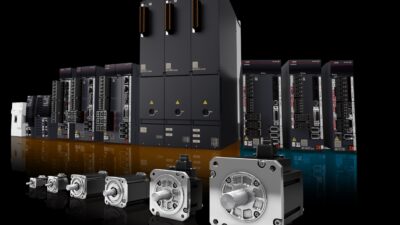Traditional paper recorders are a widespread, core engineering tool, but there are major advantages to going paperless—principally because of electronic data storage. Electronic information allows for faster, more comprehensive analysis of data. It eliminates questions of data resolution, the need for interpolation of trace values from a chart, and the associated errors of transferring da...
Traditional paper recorders are a widespread, core engineering tool, but there are major advantages to going paperless—principally because of electronic data storage. Electronic information allows for faster, more comprehensive analysis of data. It eliminates questions of data resolution, the need for interpolation of trace values from a chart, and the associated errors of transferring data to a spreadsheet for further analysis. Maintenance and operating costs decrease by eliminating paper-recorder mechanical parts (chart drives and pen mechanisms) and consumables (charts, pens, and ink wheels).
Financial analysis
The “Consumable savings analysis” sidebar breaks down significant process costs, based on a normalized estimate of the time for a task and for data analysis, along with average 2003 wage data from the U.S. Bureau of Labor Statistics. Actual times for specific manufacturing rework and data analysis, number of production runs, and time for archiving and record keeping can easily be substituted for any manufacturer’s production application. The example provides a guideline of potential savings and can vary significantly based on product cost and complexity, labor rates, as well as process and requirements.
Additional cost savings can be realized by factoring in costs incurred for the time and effort required to change charts, catalog the chart’s location for later retrieval, and chart storage. Electronic data can be archived more quickly, and the archiving media, like a CD, holds larger amounts of data in a smaller space.
Improvement opportunities
Based on the “Input-process-output” model graphic, primary process requirements are to provide a complete chart trace for the specified time period to release the production lot. Paperless recorders can do this and more.
Paperless recorders avoid ink and paper replenishment, paper jams, the chart pen not working, and illegible charts. Costs from such non-conformance issues include documenting the problems, disposition of the material, rework or scrap costs, and delays in customer shipments. Paperless recorders also reduce maintenance (since most mechanical parts or assemblies have been eliminated in the paperless recorder), set-up time (since set-ups can be configured from a PC and stored on a storage media for downloading rather than programming at the recorder), and out-of-tolerance issues (since paperless recorders use digital technology, which is less susceptible to drift).
Archiving, record keeping
Methods for electronic data storage include archiving to a CD-ROM, a remote PC Server, a local PC hard drive, original media used in the recorder (floppy, ZIP, Compact Flash or PCMCIA), or printing data and keeping a hard copy record. Record archiving is a hidden cost that can be difficult to quantify, since many activities, such as cataloging, filing, and record retrieval, are required for paper and electronic records. Data analysis software, with its search feature, simplifies this task by enabling the user to quickly access the desired data point for a specific time and date or to scan data for possible problem areas. Paper charts require locating the correct chart and unrolling it to the specific date and time, noting the information, and refilling the chart.
Data analysis
Data analysis varies from a glance to confirm operator expectations to an exhaustive review and analysis using statistical data analysis tools for ensuring the process is within the statistical upper and lower control limits. When detailed data analysis and report generation are needed, potential savings of paperless recorder use increases significantly.
With paper charts, if analysis requires any more than overlaying a fixed template to determine that the traces fall within the prescribed process limits, time required to read and transfer data increases significantly. The operator must read the chart and interpolate the position of the traces to determine a process value, then transfer that value to a spreadsheet for data analysis or reporting. Data resolution, as well as time, can be lost. Electronic data allows fast, easy importation of a specified amount of data (each with its own time stamp and value), unbounded by paper recorder resolution. Once the file has been imported, it is easy to do additional data analysis, such as determining the statistical mean, or three-sigma limits, focusing on a single data trace, or doing complex data comparisons. Exporting data to a separate spreadsheet program leaves the original data file unchanged and secure.
Final comparisons
With active matrix displays and the ability to customize screens, paperless recorders make it easier to understand what is happening with a process. They also generally include Ethernet communications and networking capability, making it easy to set up the recorders for real-time data acquisition or FTP data transfers. Paperless recorders, because of their advanced processing power, can also provide enhanced password protection and offer traceability of user access; these features are generally unavailable with traditional paper recorders. Better decision-making results from quick access to reliable, easy-to-use data, lowering overall production costs. All of these factors add up to make paperless the way to go.
Author Information
Douglas Bradway is product manager responsible for Honeywell’s data acquisition products globally.
Consumable savings analysis using paperless recorders
Typical recorder consumables costs:
Ink cartridge = typically $10-$14
Trace length = typically 1,800-2,000 m
Chart paper = typically $8.50-$13
Length typically = 16-25 m
Typical chart speed = 25 mm/hr or 1-in./hr
At an average cost of $12/pen and $10/chart 16 m in length.
12 hour work days, 6 days per week, 50 weeks per year = 6 charts per year.
Assume that pens are changed twice per year due to use and drying out.
Annual estimated cost of consumables is approximately $84 for a one-pen recorder to $132 for a three-pen recorder. If the process runs 24 hours per day, the estimated cost jumps to $144 for a one-pen recorder and $192 for a three-pen recorder.



